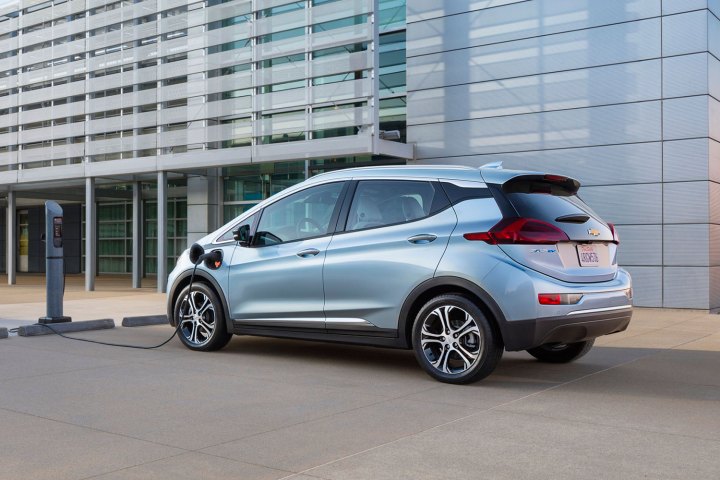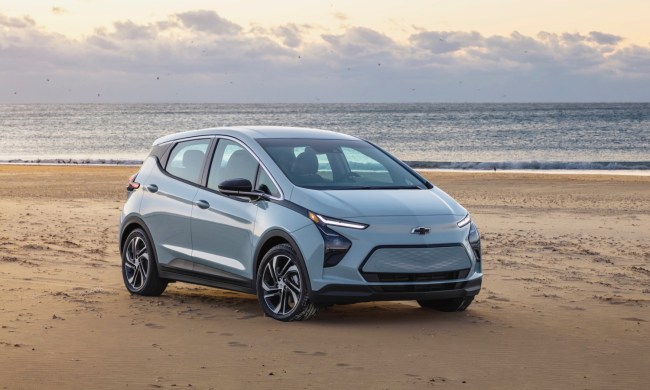
The limited, two-state launch is a big switch. General Motors Environment and Energy Policy and Communications Manager Shad Balch told AutoBlog in late 2015 that after positive response to the Bolt EV concept “GM leadership has essentially fast-tracked this car into production.”
“We’ve also committed that it’s going to be a 50-state vehicle at launch. That’s to show our commitment to the technology,” Balch said. “Our hope is that it becomes a high-volume-selling car and that it’s not just for the coasts. It’s not just for a certain income level, but it is a long-range EV that anybody can get themselves into.”
When GM spokesperson Michelle Malcho told the Wall Street Journal this past week that deliveries were still on for California and Oregon in 2016 and that other states will have to wait for a slow rollout of limited inventory during 2017, it became clear that the General’s launch plans had changed. “We are focusing on this year getting the cars ready for customers … and doing it the right way,” Malcho said.
As Electrek posited, perhaps the change is due to production issues. But it might be ZEV-related. The deliveries first to California and Oregon, both with Zero Emissions Vehicle (ZEV) mandates, raise questions about the Bolt EV being a “compliance car,” not really a mass market vehicle.
In the 10 states with ZEV mandates — California was the first and nine others adopted the same levels — automobile manufacturers are required to produce within the state a fleet minimum of 15-percent zero emissions vehicles by 2025. The number of vehicles required by manufacturers increases incrementally until 2025. Carmakers that don’t meet the annual mandate levels through ZEV sales must purchase ZEV credits from other manufacturers who have more credits than they need.
Buying credits can be expensive. A compliance car, even if sold at a loss, can still be better for the bottom line, and perhaps for corporate ego, than buying credits from other manufacturers. Credits are based on vehicles sold and driving range. So Tesla earns 4 credits for each Model S sold, according to Watchdog, with each credit worth $4,000.
If GM is producing the Bolt EV only to meet mandates in ZEV states, the highly touted “mass market EV coming-soon-to-50-states” blush comes off that rose quickly. If the numbers still hold and, with a highly publicized 200-mile plus range, each Bolt EV represents $16,000 GM wouldn’t have to spend buying ZEV credits from other manufacturers. That possibility could make it worthwhile to take a loss on each car sold in ZEV states but make it up in credits.
The ZEV states in addition to California and Oregon are Connecticut, Maine, Maryland, Massachusetts, New Jersey, New York, Rhode Island and Vermont. If only those states end up with Bolt EVs for sale 2017, the ‘compliance car’ concern may turn out to be real. Consumers in ZEV states won’t lose out by buying a compliance car, but people in the other 40 states won’t even get a chance.
There’s another possible explanation for the recent shift in GM’s Chevy Bolt EV rollout plans. Two days after the November 8 election the Alliance of Automobile Manufacturers sent a letter to President-elect Trump’s transition team, asking them to put all federal policies, actions, regulations, and rules from the DOT and DOE regarding electric vehicles and autonomous vehicles since September 1 on hold until after the transition in January so the policies could be studied for alignment with administration policy directions.
Significant electric vehicle and charging infrastructure deployment actions and autonomous vehicle development guidelines have been announced since September first, which raises concerns about government support for EVs and self-driving cars and for automakers’ responses. Hopefully, the Bolt EV launch shift isn’t the first impact of many resulting from the new administration.



